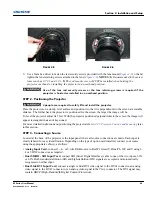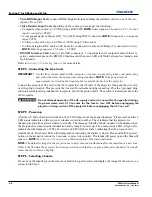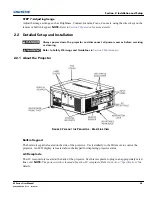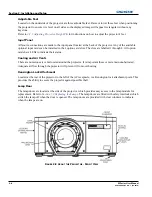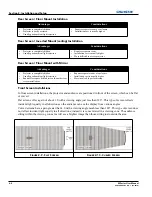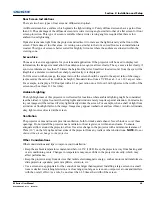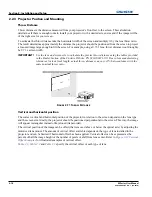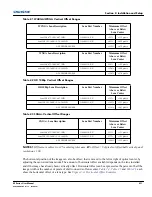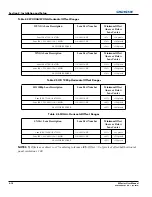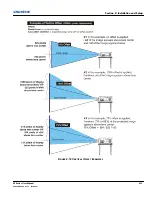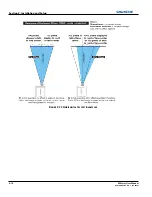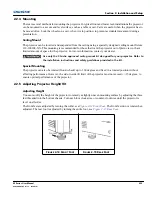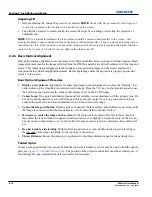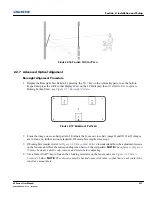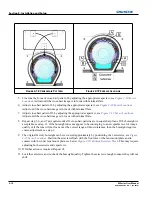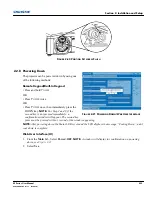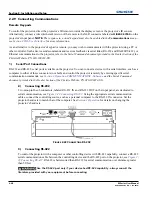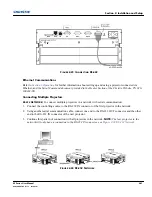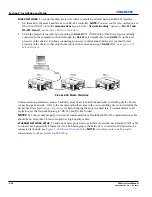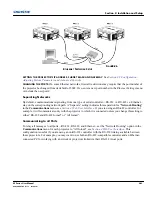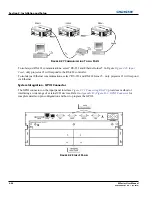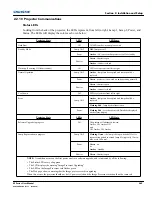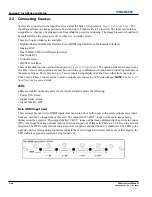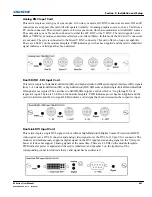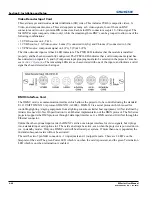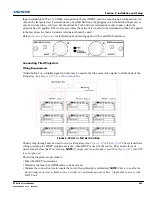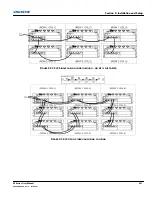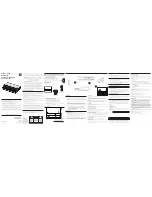
2-16
M Series User Manual
020-100009-05 Rev. 1 (09-2010)
Section 2: Installation and Setup
Adjusting Tilt
1. Before adjusting tilt, ensure the projector is centered.
NOTE:
Check with site personnel for the degree of
screen tilt, or measure this incline with a protractor at the screen.
2. Then tilt the projector to closely match the screen tilt angle by extending or retracting the projector’s 3
adjustable feet.
NOTE: 1)
For an ideal installation, the lens surface should be centered and parallel to the screen - this
orientation helps to ensure optimized lens performance with minimal offset. Choose a sturdy mounting surface
that allows for this. If this position is not possible (such as when the projector is significantly higher than the
center of the screen), it is better to rely on offset rather than extra tilt.
2.2.6 Basic Optical Alignment
Only perform image alignment once the projector is fully assembled and powered up in its final location. Basic
image alignment ensures the image reflected from the DMDs is parallel to and well-centered with the lens and
screen. This initial optical alignment is the foundation for optimizing images on the screen and must be
completed before final boresight adjustments. Before beginning ensure the projector is properly positioned
relative to the screen.
Basic Optical Alignment Procedure
1.
Display a test pattern:
Appropriate for analyzing image focus and geometry, such as the “framing” test
pattern showing the cross-hair centered across the image. Press the
T
EST
key on the remote keypad or use
the built-in keypad and press the soft key that displays Test on the LCD display.
2.
Course focus:
Do a quick preliminary focus and (if available) zoom adjustment with the primary lens. Do
not worry about consistency across the image at this point, just center focus. It is good practice to have
zoom adjustment color and focus adjustment color in the center of its range.
3.
Center the image in the lens:
Holding a piece of paper at the lens surface, adjust offsets as necessary until
the image is centered within the lens perimeter. A full white field works best for this.
4.
If necessary, center the image on the screen:
If the projector is mounted off center to the screen axis,
then offset the lens as much as required. Aim the projector over slightly towards the center of the screen,
but use caution when doing so, as too much tilt will cause excessive keystone distortion. Lens offset will
not.
5.
Re-check side-to-side leveling:
With the framing pattern on screen, double-check projector leveling
so
the
top edge
of the image is parallel to the top edge of the screen.
6.
Throw Distance:
Ensure the projector is positioned in the throw distance range for the particular lens.
Folded Optics
In rear screen applications where space behind the projector is limited, a mirror may be used to fold the optical
path, see
Figure 2-16 Folded Optical Path
. The position of the projector and mirror must be accurately set - if
considering this type of installation call your dealer for assistance.
Summary of Contents for M Series
Page 1: ...M Series U S E R M A N U A L 020 100009 05 ...
Page 2: ......
Page 3: ...M Series U S E R M A N U A L 020 100009 05 ...
Page 14: ......
Page 46: ......
Page 120: ......
Page 131: ...Section 6 Troubleshooting M Series User Manual 6 7 020 100009 05 Rev 1 09 2010 FIGURE 6 1 ...
Page 132: ......
Page 148: ......
Page 152: ......
Page 167: ......


